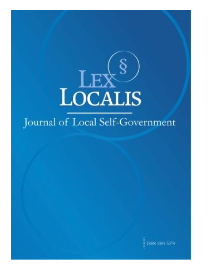RAGA AND ROOTS: REIMAGINING CULTURAL BELONGING THROUGH HINDUSTANI CLASSICAL MUSIC
DOI:
https://doi.org/10.52152/801183Keywords:
hindustani classical music, Raga, belonging, guru–shishya, diaspora, digital musicAbstract
As the world continues to increasingly globalize and cultural loss mounts, traditional art practices struggle to maintain a cultural relevance. Hindustani classical music and its Raga system have served as an important cultural archive that preserves oral knowledge, emotional expression, and a sense of belonging through generations. However, younger generations have increasingly distanced themselves from these traditions. Simultaneously, diasporic communities are seeking ways to reconnect with cultural roots. Music as a dynamic cultural practice is at a critical juncture. This research will consider the issue of cultural disengagement by exploring how Hindustani classical music cultivates identity and belonging and significance for Hindustani music, not only in India but also within diasporic and global Indian communities. This research will also ask if traditional pedagogical practices and digital practices can be successful in maintaining relevance in Raga-based music. Through an ethnomusicological lens, the study combines ethnographic interviews with music practitioners and music students, an analysis of virtual baithaks and online educational platforms, as well as field experiences from live performances that were undertaken in urban India and around the world. The findings suggest that while the guru–shishyaparampara represents a valuable channel for depth and authenticity, technology driven models - riyaz apps, virtual masterclasses, and social media discussion groups - are generating renewed interest in music amongst youth (new technological citizens).Raga is larger than a resource of melodies; it represents an emotional, cultural and community connection. The paper ends arguing that when Hindustani classical music is embraced through ethical, collaborative and mixed modes and methods, it can bridge generational gaps, reactivate cultural knowledge, and strengthen identities in communities forming in diaspora and digital connectedness. This study contributes to our conversations about cultural sustainability, decolonization, and the importance of indigenous knowledge in contemporary education systems.
Downloads
Published
Issue
Section
License
Copyright (c) 2025 Lex localis - Journal of Local Self-Government

This work is licensed under a Creative Commons Attribution-NonCommercial-NoDerivatives 4.0 International License.








